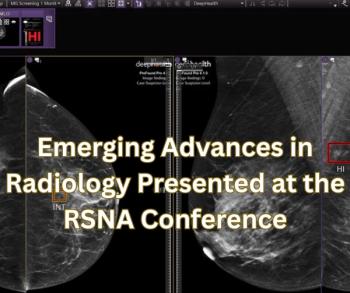
Gadolinium-based Contrast Linked to Brain Abnormalities
Frequent use of gadolinium-based contrast medium may play a role in hypersensitivity in the brain of patients who undergo multiple MRIs.
Gadolinium-based contrast medium (Gd-CM) may remain in the body long after administration as an MRI contrast agent, causing brain abnormalities, according to a study published in the journal
Japanese clinicians had noticed that patients with a history of multiple administrations of Gd-CM while having brain MRIs, were showing areas of hyperintensity in the dentate nucleus (DN) and globus pallidus (GP). To investigate this, researchers from the University School of Medicine and Tokyo and the Hyogo Cancer Center in Akashi compared unenhanced T1-weighted MR images (T1WI) of 19 patients who had undergone six or more contrast-enhanced brain scans with 16 patients who had received six or fewer unenhanced scans.
“Hyperintensity in the DN and GP on unenhanced MRI may be a consequence of the number of previous Gd-CM administrations,” said lead author Tomonori Kanda, MD, PhD, in a release. “Because gadolinium has a high signal intensity in the body, our data may suggest that the toxic gadolinium component remains in the body even in patients with normal renal function.”
The researchers found that the dentate nucleus-to-pons signal intensity (SI) ratio showed a significant correlation to the number of Gd-CM administrations. The globus pallidus-to-thalamus SI ratio showed a significant correlation with the number of Gd-CM previous administrations as well.
“The dentate nucleus–to- pons and globus pallidus–to-thalamus SI ratios in patients who had undergone contrast-enhanced examinations were significantly greater than those of patients who had undergone unenhanced examinations,” the authors wrote.
Patients with diseases such as multiple sclerosis undergo many contrast-enhanced MRI scans, Kanda said. It is possible that the hyperintensity found in the DN could be related to the large cumulative dose of gadolinium rather than their diseases. However, Kanda also emphasized that there is not yet any proof that gadolinium is responsible for hypersensitivity in the brain and more research is needed to determine if there is a relationship.
Newsletter
Stay at the forefront of radiology with the Diagnostic Imaging newsletter, delivering the latest news, clinical insights, and imaging advancements for today’s radiologists.




























